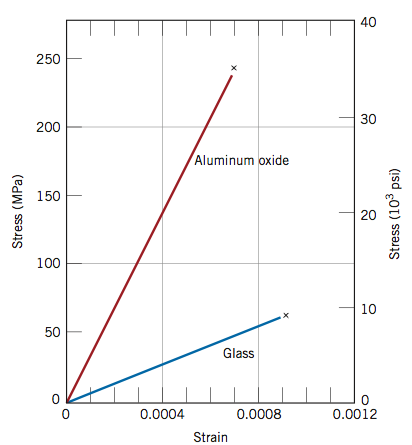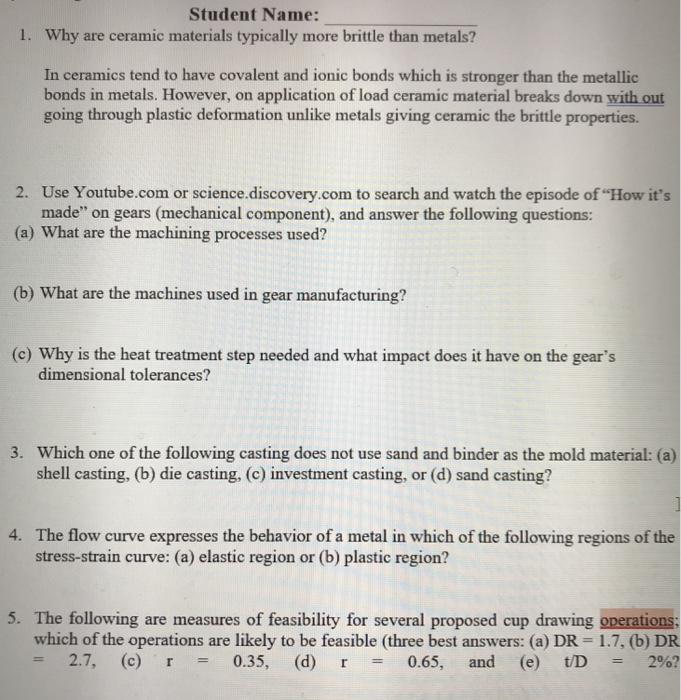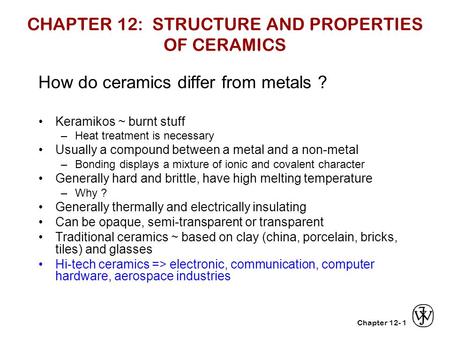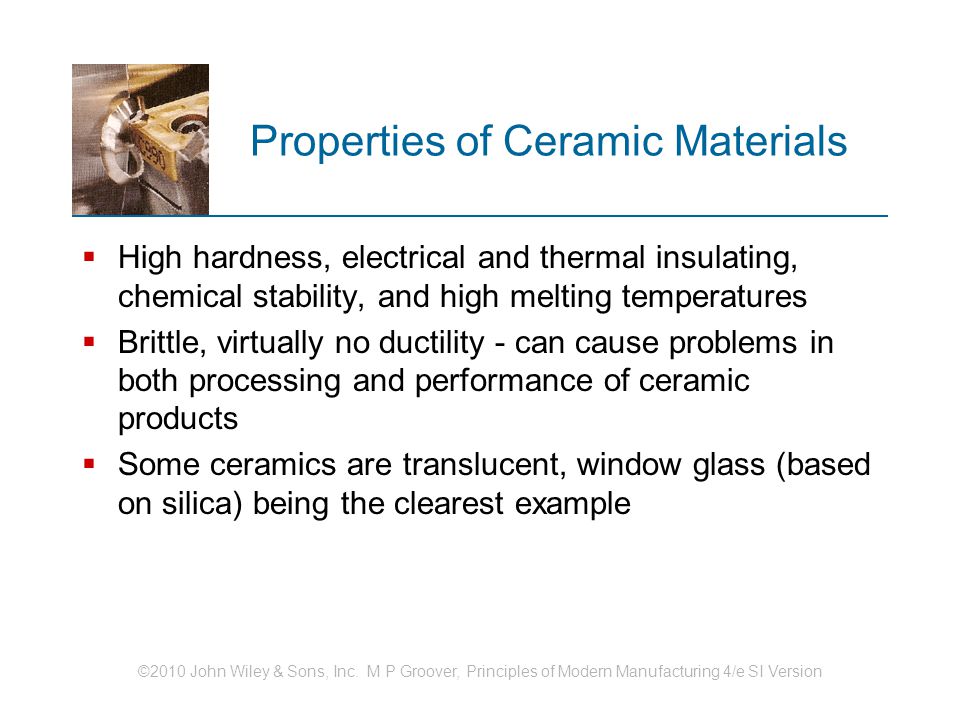In one study alumina alumina articulations in thas showed less osteolysis in the proximal femur than the metal uhmwpe controls at 5 years after surgery.
Characteristics of ceramic brittleness.
The brittleness of ceramic materials affects the reliability and consistency of material properties to a great extent.
E g ts 0 10 to 0 001 of theoretical griffith orowan theory.
Therefore it is the key work of many ceramic researchers to study the brittleness of ceramic materials and propose effective ways to improve it.
Ceramic may be used as a noun in the singular to refer to a ceramic material or the product of ceramic manufacture or as an adjective.
Ceramics and glasses are inorganic nonmetallic materials consisting of metallic and nonmetallic elements bonded primarily with ionic and covalent bonds.
Usually they are metal oxides that is compounds of metallic elements and oxygen but many ceramics.
Ceramic composition and properties ceramic composition and properties nonconductivity.
Brittleness can result from different conditions such as from drying plasticizer migration etc.
Ceramic composition and properties atomic and molecular nature of ceramic materials and their resulting characteristics and performance in industrial applications.
Hard materials are more apt to fracture in the vicinity of an indentation during a hardness test while softer materials.
The superior wear characteristics of ceramic materials have been verified in many clinical and experimental studies.
Flaws are stress concentrators e g pores and form cracks fracture occurs in sequential steps crack tips move at low stresses.
Brittleness identifies material easily broken damaged disrupted cracked and or snapped.
Brittle ceramic strength is lower than expected.
The following will do a simple data collation for you.
Ceramic engineering like many sciences evolved from a different discipline by today s standards.
3 brittle fracture short range deformation mechanisms.
These high strength bonds give rise to the special characteristics of these materials.
In ionically bonded ceramics bonding electrons are accepted by the electronegative elements such as oxygen and.
Ceramics is the making of things out of ceramic materials.
Nonconductivity arises from the lack of free electrons such as those found in metals.
Characteristics may a ect the order and degree of mechanism dominance.
The hardness and brittleness of ceramic materials are interrelated.
E g ts 6000 mpa observed strength.
Brittle materials exhibit tensile s s behaviors different from the usual s s curves.
Industrial ceramics are commonly understood to be all industrially used materials that are inorganic nonmetallic solids.
Long term clinical outcomes have shown few if any problems with alumina total hips in the absence of confounding variables.
The ionic and covalent bonds of ceramics are responsible for many unique properties of these materials such as high hardness high melting points low thermal expansion and good chemical resistance but also for some undesirable characteristics foremost being brittleness which leads to fractures unless the material is toughened by.




























